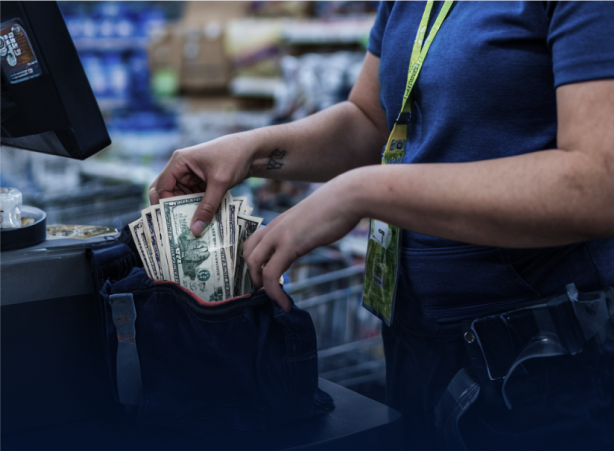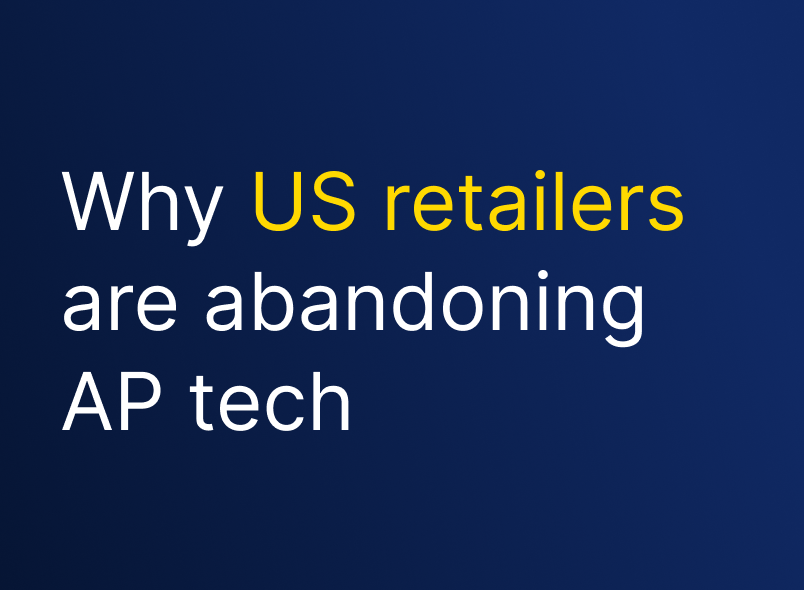Like tech investors, AP/LP leadership need to invest their limited budget (and time) into initiatives that are going to deliver the best return on investment possible. We believe AP/LP leaders that take the following approach to investment will outperform their peers:
- Allocate significantly more of their budget and time to tech, with a move away from large capital investments to OPEX investments.
- Invest in technology that improves productivity, and empowers the frontline (store teams) and wider organization to prevent loss upfront, rather than AP/LP continually reacting, and providing offenders with the time and anonymity they thrive on.
Data shows that winning retailers invest more in tech. In 2019, it was estimated retailers invested $203B in IT. A benchmark report into IT spending in retail in 2018 identified the investment into IT by retailers varies significantly, with over 80% of retailers investing between 1.5 - 4% of revenue. Winning retailers, which are retailers with above average sales growth, invest at the higher end of this range.

Shrink bigger than IT budgets for many retailers
In 2018, the average shrink for US retailers was 1.85%, this means that over a quarter of retailers are losing approximately the same to shrink (or more) than they invest in technology. What if more investment was made into technology to reduce shrink, what impact would that have on retailer profitability?
AP/LP budgets historically focused on workforce
According to the Sensormatic Global Shrink Index in 2018, US retailers spent on average 17% of their LP budget on technology with the remaining 83% invested in people and related costs. Globally, 39% of retailers in the survey, only invest between 1 - 4.9% of their AP/LP budget into technology.

Given that retailers that are outperforming in sales growth invest more in technology, we believe AP/LP that invest more in technology will outperform their peers on shrink performance in the years to come.
Supercharge your workforce with technology to drive better results
Over 50% of retailers surveyed said their top technology opportunity area is to maximise workforce efficiency and to establish a more data-driven culture (using information to create a sustainable competitive advantage).
This opportunity area should also be the priority for AP/LP teams. Today, very few retailers have dedicated AP/LP resource in most of their stores which makes addressing loss as an organization rather than a department, critical. Therefore, an enormous opportunity beckons for AP/LP leaders that make smart technology investments that equip the frontline to prevent loss in the moment as well as the AP/LP team with intelligence to reduce more systemic loss drivers.

Technology investment needs to be thoughtful
Technology must make the job easier for customers to buy your products, for busy store teams to run effective stores, the AP/LP field team supporting stores, and corporate. The technology, specifically software, needs to be simple so that anyone could use it without training - and they can easily understand how using the software helps them reduce loss in-store. Based on our experience working with retailers around the globe, most software invested in/or administered by AP/LP doesn’t meet this user experience threshold. But done well, it can have a huge impact for the organization.
Everseen, developers of AI that helps retailers reduce loss at POS, is an example of smart technology investment, helping prevent loss in multiple layers:
- Customers - helps avoid incorrectly scanning at self-checkout.
- Frontline - empowers timely intervention in the transaction process at the right time to reduce loss.
- AP/LP team - aggregated data helps drive ongoing improvements and training opportunities to reduce the opportunity for loss.
Thinking like a tech investor to make good bets
AP/LP leaders have limited time, energy, and budget to deploy to make the biggest impact for their organization. There will be no shortage of opportunities, so they need to be able to prioritize them by expected benefits (e.g. to reduce loss, to improve workforce productivity, to improve safety, to reduce enterprise risk), likelihood of success (is it proven?), ease of implementation, and percentage of budget. Just like a tech investor, AP/LP leaders should take a portfolio approach and not put all of their eggs in one basket. The movement to software as a service enables AP/LP teams to move away from large capital investments to an OPEX model.
It’s important for AP/LP leaders to identify processes that occur frequently and have high human touch that relate to loss. Put simply, look for “jobs” that your frontline, AP/LP team, and wider organization perform regularly and where the current process is time-consuming and delivering unsatisfactory results. Then investigate if and how technology could streamline the processes and ideally address the root cause of the problem so you have safer, more profitable stores, and reduce enterprise risk.
One example of this is incident reporting from stores and how this folds into case management for AP/LP to drive outcomes that improve the bottom-line and/or reduce enterprise risk and/or improve store safety. Most AP/LP leaders recognize they have cumbersome incident reporting and case management systems for their busy store teams that don’t produce the intelligence AP/LP needs to drive business outcomes. These systems of record fail to put the users first and often take busy store teams 25 minutes to report an incident. They are not built to help the organization drive loss reduction outcomes.
The challenge for AP/LP leaders is to look past the status quo and envision a future where technology enables new and innovative ways to address the core drivers of loss.






.png)
.png)